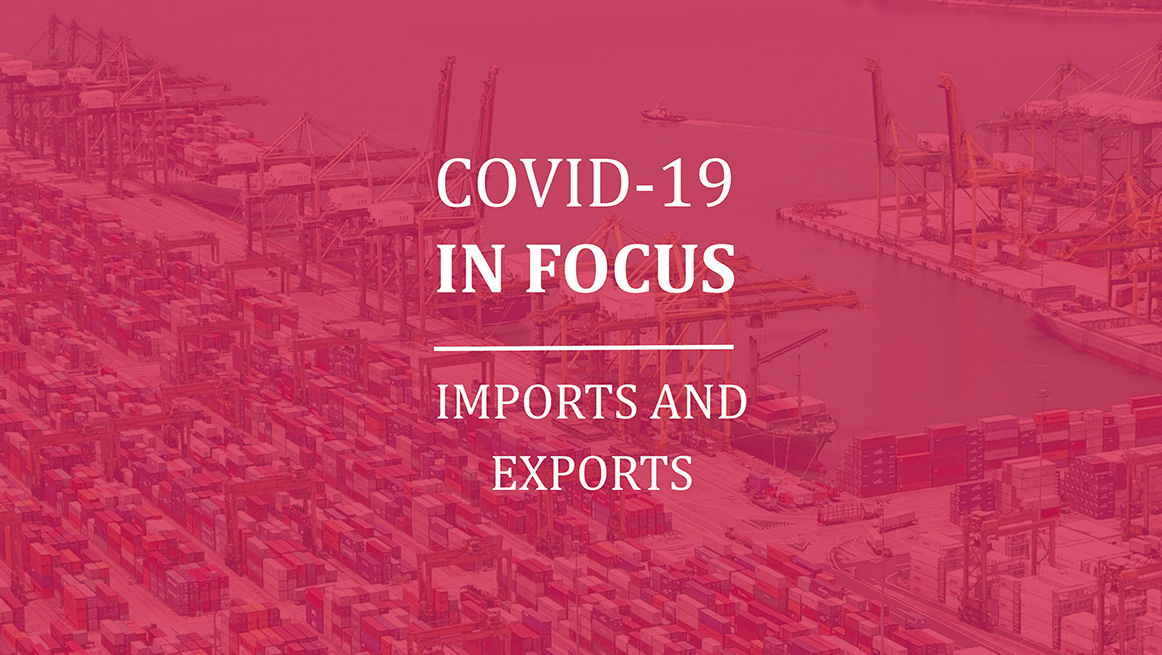Driving commercial and political engagement between Asia, the Middle East and Europe
Driving commercial and political engagement between Asia, the Middle East and Europe
Driving commercial and political engagement between Asia, the Middle East and Europe

Each Thursday, Asia House Advisory’s COVID-19 monitoring service examines the impact of economic measures taken by individual governments across Asia and the Middle East, and the trends emerging across these regions. This week, we look at the affect on imports and exports in ASEAN.
In 2019, Asian exports declined for the first time in a decade, sparked largely by knock-on effects of US-China trade tensions. COVID-19 and the resulting nationwide lockdowns have only accelerated declines in trade volumes globally. Export and import data in April and May 2020 from major ASEAN states showed large drops in trade – with exports and imports plunging as much as 50 per cent.
Unsurprisingly, this is in line with trends seen both elsewhere in Asia and globally – India, China, and the United Kingdom have all reported similar drops in trade. Analysts warn that a further drop awaits. Recent Purchasing Managers’ Index (PMI) figures – a key indicator of factory activity – still point to a deeper downturn in exports that has yet to materialise.
EXPORTS AND IMPORTS CONTINUE TO PLUNGE – IN LINE WITH GLOBAL TRENDS (GRAPH)
Given the negative trade outlook at the end of 2019, there was already a need for policy reform to boost trade and economic growth. The pandemic has further accelerated the decline in trade, increasing urgency for governments to act.
The economic shock of the pandemic gives a mandate for governments to be more daring with policy reform and planning, implementing more complex and large-scale reforms that they may otherwise have been reluctant to risk. COVID-19 has already been a catalyst for urgent policy change and government action. The key thing to watch will be whether this new mandate is carried on from stimulus packages to larger reform. There have already been a number of examples in the region:
• Singapore: Prime Minister Lee Hsien Loong this week announced that general elections will be held on 10 July, to ‘clear the decks’ and give a new government a fresh mandate.
• Indonesia: Finance Minister Sri Mulyani has announced the use of unprecedented monetary and fiscal policies, using quantitative easing for the first time ever to support COVID-19 economic relief efforts.
• Vietnam: The government has continued to effectively position itself as an alternative destination for manufacturing and as the new ‘workshop of the world’, particularly as suppliers look more seriously towards diversifying supply chains out of China.
Geopolitical tensions – centred around increasing US-China tensions – could both help and hinder trade in the region. The beginning of 2020 saw hope that increased international cooperation following the US-China phase one trade deal would boost global trade. Geopolitical tensions have only since increased however and may impact trade in Asia in two ways:
Dampening trade and recovery: The boost some sectors are seeing – for example in technology and medical equipment – and prospects for recovery in other sectors could be largely impacted by trade tensions. Such tensions could interfere with demand and supply for key exports and imports – particularly in digital demand.
Encouraging faster diversification of supply chains away from China: Mounting international trade tensions over China’s handling of the COVID-19 outbreak may provide further impetus towards faster diversification of supply chains. This could bolster regional economies – Vietnam for example has already positioned itself as an alternative supplier of goods to the US market. This could be a factor in the relatively lower drop in exports and imports the country has experienced.
These insights are produced by Asia House Advisory’s COVID-19 monitoring service.
